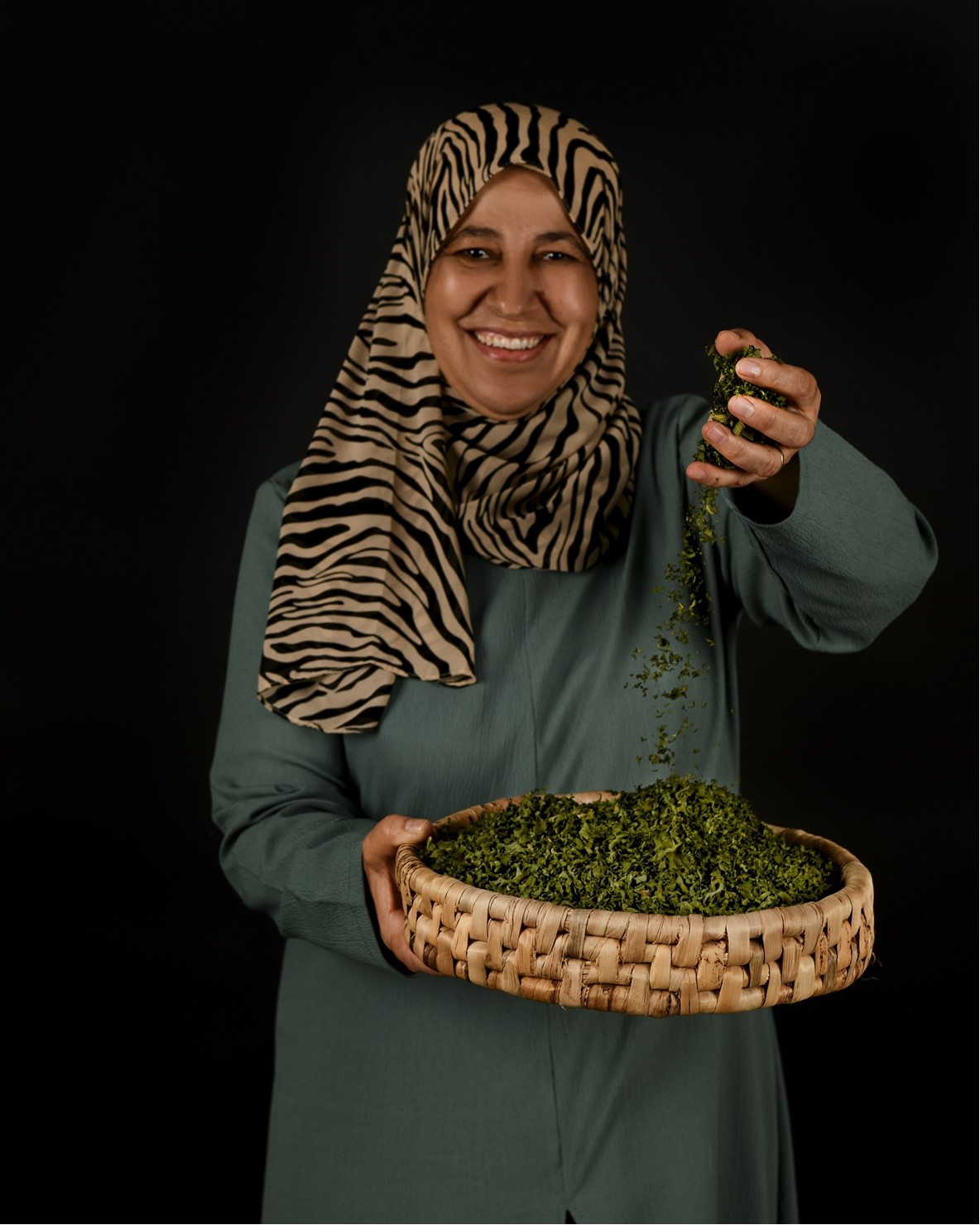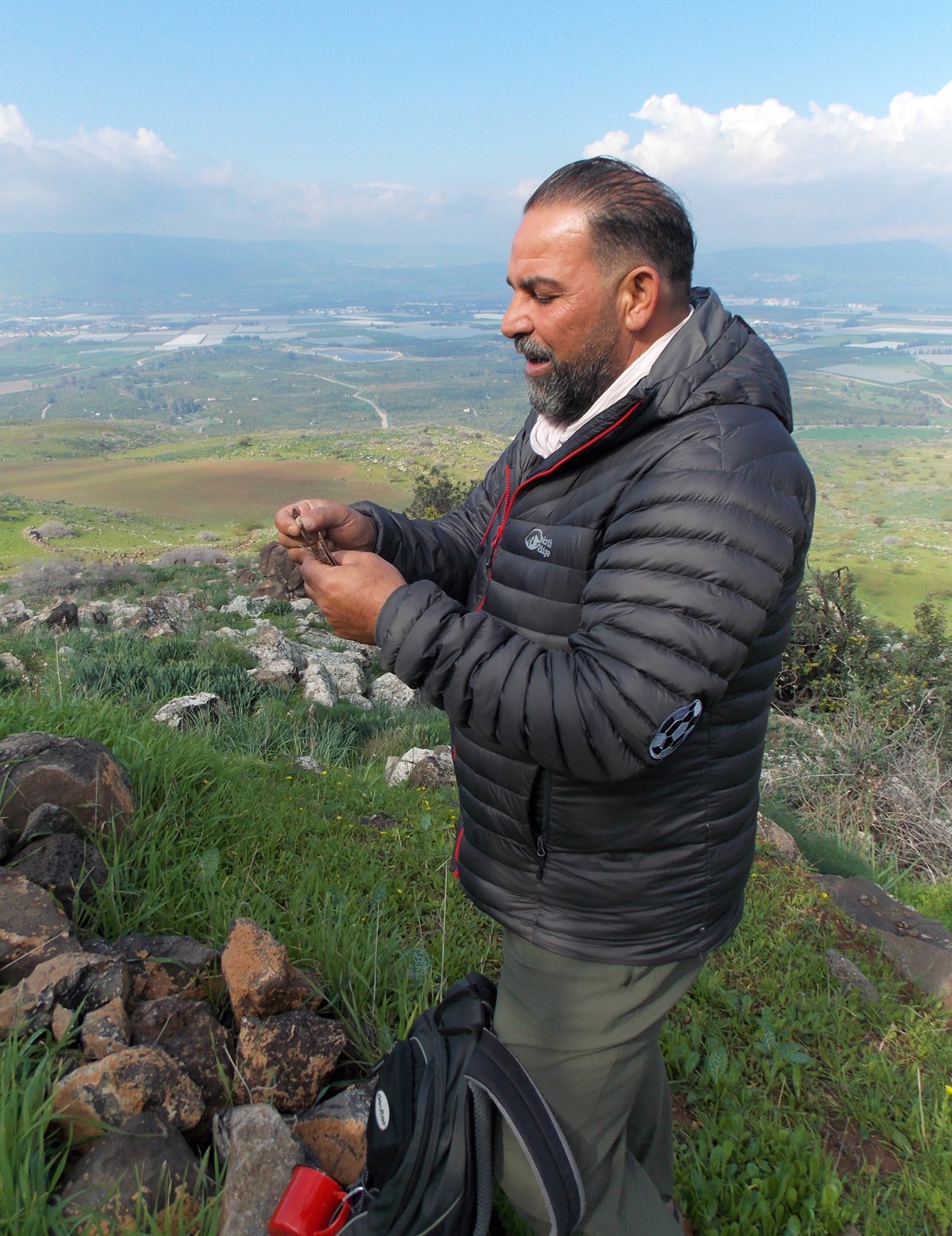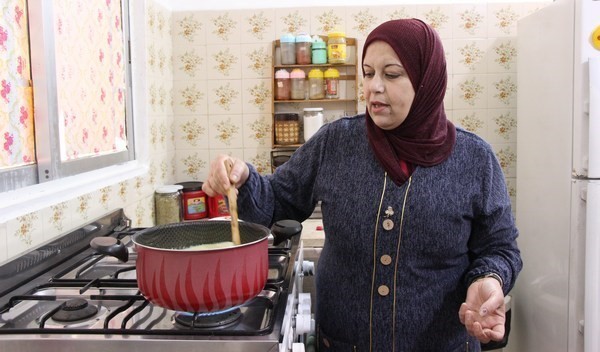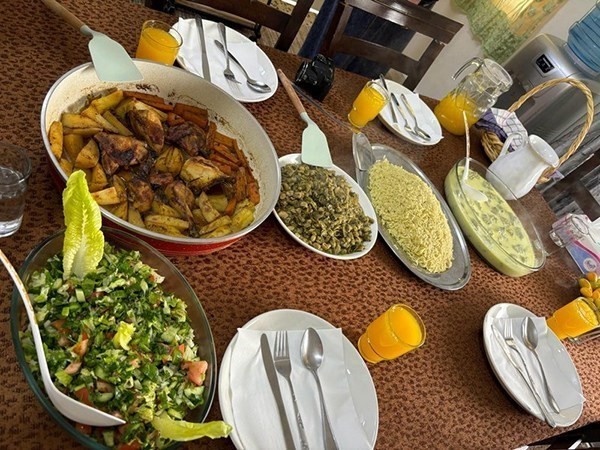Every child in the diaspora has a dish from the homeland that
connects them to home, not the home they grew up in or the home they have grown
to know, but the home they wish to return to someday. These dishes connect them
to their tongues where words may fail them sometimes, and for me, that dish has
always been Cha’acheel.
اضافة اعلان
One afternoon, we were invited to an elderly family member’s
house who put a warm pot on the floor with a few plates, and an assortment of
arugula, radishes, onions, and pickles. As we sat down, she looked at my mom
horrified, thinking that her American-born children could never possibly think
about
Cha’acheel, to which my mom replied to
her surprise, “They eat everything, don’t worry.”
Winter is Loof Season
Little did that family member know that my grandma from my mom’s
side, who was born and raised in Aleppo, Syria, would become the gatekeeper of
this dish. It is something so commonly eaten in the north, with an ingredient
that can only be foraged in late January to early February, Loof (Arum Palaestinum). Native to the Levant, Loof is the main ingredient in Cha’acheel. It is dangerous on its own
and eaten raw, but when cooked, it makes for a healthy ingredient in the dish.
It is sour, claimed to have anti-cancer properties, and is vegetarian. It is
also one of the dishes that has dumplings.
 Foraging Loof in Umm Qais to cook Cha’acheel. (Photo: From Farm to Fork in Jordan)
Foraging Loof in Umm Qais to cook Cha’acheel. (Photo: From Farm to Fork in Jordan)
So here is where it gets embarrassing. I claim this to be my
favorite dish, and up until last week, I had not had it for 20 years.
A phone call to a friend, Nico Dingemans, who is putting
Jordan on the culinary map, and a light nudge to my husband, ventured us
to
Umm Qais. Located at the tripoint of
Palestine, Syria, and Jordan, Umm Qais was named one of the
Best Tourism Villages by the UN World Tourism Organization (UNWTO). If you are going to cook and eat a dish from
the north of Jordan, we could not think of any better way than to travel there,
and so our journey began, from the earth to the dinner table.
Poisonous when raw, healthy when cooked
Our first stop was with
Ahmad Alomari, a native hiker and
botanist who took us to the mountains of Umm Qais, his birthplace and also the
starting point of the Jordan Trail he helped to map. This unique region shares a distinct
micro-climate with a basalt limestone terroir that allows for perennials and
edible flowers to bloom in wintertime. The bright green leaf of Loof (poisonous
when eaten raw but medicinal when cooked in a particular way) is the
illustrious key ingredient in Cha'acheel.
For Alomari, foraging is not just a hobby, but a way of life. He added, “I
think of my ancestors many years ago who used to come to this land and had to
figure out on their own if these plants were poisonous or not.”
Touching the plants with your hand and feeling the dirt was
just so special, a reminder of the land that belongs to us and we belong to it.
As Ahmad started taking us on our descent, he explained that Loof is only found
in hidden places between the basalt rocks on the slopes of the mountain. We
arrived in the middle of the two-week season and Ahmad knew exactly where to
look, so we were quick to harvest our fresh Loof and collect it in our mesh
bag.
 Nico Dingemans – From Farm to Fork in Jordan – enjoying the fresh oxygen and views. (Photo: Sarah Shabbar, Jordan News)
A hero-ingredient in culinary tourism
Nico Dingemans – From Farm to Fork in Jordan – enjoying the fresh oxygen and views. (Photo: Sarah Shabbar, Jordan News)
A hero-ingredient in culinary tourism
For Nico Dingemans, an expat living in Jordan, Umm Qais was his
first encounter with Traditional Arabic and Islamic Medicine (TAIM) which deeply
enriched the
culinary heritage of Bilad Al Sham. He learned about the
health benefits of Loof three years ago from Muna Haddad, founder of
Baraka Destinations. Haddad arranged for him to go foraging with
Ahmad and take a cooking class in Galsoum’s Kitchen. Dingemans: “I love this place because Umm Qais is Mother
Nature’s medicine cabinet in the mountains where shepherds, herbalists, and foragers
roamed the northern lands of the Jordan Valley for centuries. This is where I
learned how to cook Cha’acheel, in the heart of the Fertile Crescent.”
“I have a crush on Cha’acheel” he
admits: “We even added it to the menu for the
Michelin chefs & food writers we hosted last
summer on a culinary tour with the Jordan Tourism Board. Did you know that
Loof is also one of the 11 Palestinian Ark of Taste products by
the
Slow Food Foundation for Biodiversity? It’s something to embrace
because the Ark of Taste collects small-scale quality productions that belong
to the cultures, history, and traditions of our planet. I believe that Loof is
an emblematic ingredient, and that is why it is one of the 24 hero ingredients in
our upcoming book
From Farm to Fork in Jordan.”
 Cha’acheel by Galsoum’s Kitchen and Baraka Destinations will be featured in the book. (Photo: From Farm to Fork in Jordan)
Locals still come to the mountains to
forage for food
Cha’acheel by Galsoum’s Kitchen and Baraka Destinations will be featured in the book. (Photo: From Farm to Fork in Jordan)
Locals still come to the mountains to
forage for food
Alomari also showed us other plants we could
forage for in Umm Qais during this season. We came across Swiss chard, mallow,
mustard greens, and a type of fennel that cannot be eaten, but the flowers
resemble a bud that looks like cauliflower which he says is perfect to add to
eggs. He added, with a sense of pride
“Locals still come to these mountains for forage many of the plants you see now
are way less than the beginning of the season.” As he held up his pliers, he
also emphasized; “I try to advocate for the right way to cut the plants so they
can continue to regenerate.”
 Ahmad Alomari is passionate about regenerating, seed bombs, and foraging during the winter season. (Photo: From Farm to Fork in Jordan)
Cooking Cha’acheel in Rufaida’s kitchen
Ahmad Alomari is passionate about regenerating, seed bombs, and foraging during the winter season. (Photo: From Farm to Fork in Jordan)
Cooking Cha’acheel in Rufaida’s kitchen
After working up an appetite and inhaling every breath of fresh
oxygen we could get, and caked up muddy shoes, we headed to Umm Muhammad’s
house. A local whose journey led her from Syria to her second family in Umm
Qais. She provides cooking classes organized by
Baraka Destinations who were so gracious to provide us with the perfect host for the
evening.
Rufaida (or Umm Muhammad) truly embodies so much of what
Jordanian hospitality entails, that if your stomach is not full, they need to
feed you more. For her, food has the power
to bring people together.
 While the Jameed is boiling, we got ready to make our dumplings for the Cha’acheel
While the Jameed is boiling, we got ready to make our dumplings for the Cha’acheel
with the star ingredient: Loof (Photo: From Farm to Fork in Jordan)
As we worked in the kitchen together, putting the Cha’acheel
dumplings into the pot of already boiling Jameed, I asked Umm Muhammad, what
makes this dish so special? She replied, “Cha’acheel is one of those dishes
that cannot be modified, its ingredients remain exactly as they are, and it
cannot be played with, no matter how many of our dishes may get modified,
Cha’acheel is special in that exactly how the recipe is written, is exactly how
it is made, and all ingredients must be in the dish.”
Starting with its broth made of Jameed, it boils, and your
hands cannot leave the pot, constantly stirring to ensure it does not separate,
so then put together the main ingredients of Cha’acheel, which are the
dumplings that get added to the boiling pot - a mix of whole wheat flour, eggs,
onions, and of course, Loof. Umm Muhammad adds “I sauté the Loof and add it
with onions to bring out its flavor with some olive oil.”
 Umm Muhammad explaining how Cha’acheel is made while boiling the Jameed. (Photo: Sarah Shabbar, Jordan News)
Passed down from one generation to the
next
Umm Muhammad explaining how Cha’acheel is made while boiling the Jameed. (Photo: Sarah Shabbar, Jordan News)
Passed down from one generation to the
next
As far as how she learned the dish, very similar to myself,
her mother passed down the recipe who got it from her grandmother, and so on. As
we sat down at the table enjoying and savoring this dish, so brothy, sour, and
warm, she added “Many pregnant women like this dish, when are you and your
husband, planning on having kids?” A forever reminder that our food, so rich in
culture, history, and many plants, is only eaten and savored when you are in
the company of your loved ones.
 Rufaida’s Kitchen truly embodies Jordanian hospitality. (Photo: Sarah Shabbar, Jordan News)
Rufaida’s Kitchen truly embodies Jordanian hospitality. (Photo: Sarah Shabbar, Jordan News)
Umm Muhammad, who has had the privilege of sharing her dishes
with people from all over the world, at her humble home, also shares in
excitement that one of the best days of her life is when she got to cook for HRH
Crown Prince Hussein.
Food is political
As our food goes through a whirlwind of colonization, of
changes, as our region faces instability, I am forever reminded that food, in
it acts alone, even the power of sitting at a table and learning from where our
dishes hail, is political. This food has the power to transcend every notion,
provide a historical past, and a hopeful future, and for a child that lived in
the diaspora, who so often felt so far from home, connects us back to our land.
Read more Good Food
Jordan News









